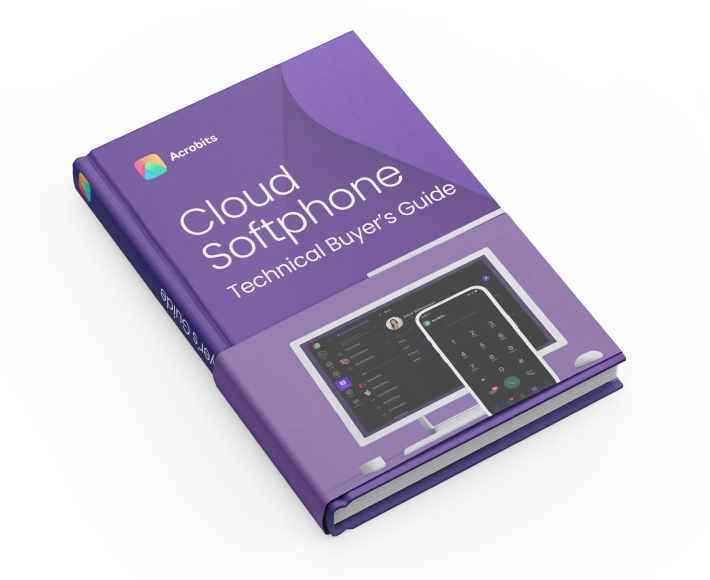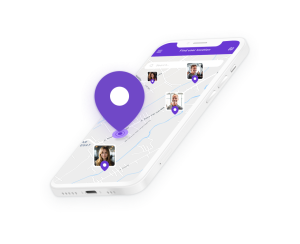Softphones and VoIP-based services have seen a significant boost in popularity due partly to the pandemic but also to changing needs for online communication. Contact centers likewise are picking up on softphone technology and possibly even switching to a more flexible, hybrid approach to daily operations.
Contact centers are the glue that connects your company to its customers. When both prospective and current clients want to contact you for sales or support, these representatives end up being the face of your company. It makes sense then to invest in the right tools and voip analytics that will empower these teams to do their best
But before we get into contact centers and their recent discovery of the advantages of VoIP, what exactly are VoIP Call Center softphones?
What Are VoIP Softphones for Call Centers?
Voice over Internet Protocol (VoIP) contact center softphones are apps that allow call center representatives to make phone calls and send messages over the Internet. These apps can be used both on smartphones and desktop devices.
Unlike traditional telephones which use dedicated wires, VoIP phones have many more features and integrations, cost far less to implement and maintain, and can fit into today’s world of digital transformations well.
For instance, call center businesses that switch to VoIP softphones can:
- Start using auto-attendants.
- Call recording.
- Automated voicemail transcription.
- And various others.
International organizations also don’t have to worry about long-distance calling charges…
VoIP has become so popular in the business sector that entire services are now available to bring the technology to the workplace efficiently and seamlessly.
Softphones are a form of VoIP software that can run on Internet-connected devices. They feature a user-friendly interface and require little to no installation cost.
For an in-depth look at softphones check:
What is Call Center Analytics?
Call Center Analytics refers to the data collected and measured to optimize and increase the target KPIs of call centers.
To drive operational efficiency, call center softphones profit from first-hand analytics from real calls.
The four most common call center KPIs are:
- Agent Handle Time (AHT)
- First Call Resolution (FCR)
- Service Level
- Customer Satisfaction (CSAT) score
What Exactly Do Call Centers Do?
Companies of many different industries and workflows use contact centers, but the main distinction to know about is inbound vs. outbound.
- Inbound centers: receive calls from customers and intend to help them with inquiries, payments, and issues. Examples include technical support and customer service.
- Outbound call centers: reach out to customers instead. Sales teams use this type to find new leads. Examples include market research teams to gain information on the market and telemarketing.
All contact centers will love the benefits of a white label VoIP softphone, regardless of their type of work. Inbound centers need representatives to be helpful and efficient, which softphones assist with.
Outbound centers rely heavily on collecting data to improve product design and other aspects of the business, which softphone platforms help you work with.
A white-label solution that is tailor-made for the specifics of your call center can be a game changer to agents’ performance. To see a live version of your specific needs, contact us for a free demo.

How Would Call Centers Benefit From Softphones?
The “elevator pitch” for softphone usage in a contact center would include cost savings, enhanced support, and increased flexibility for employees. But we’re going deeper into exactly why this technology empowers UCaaS call center analytics and the future of business-consumer communication.
1. The Ability To Work Anywhere
COVID-19 has made it clear that we can’t just rely on workstations in the office exclusively. How do you bring your call center into a “work from home” environment without compromising on service quality?
A softphone thankfully works no matter where you are. All you need is an Internet-enabled device like a smartphone or laptop, and you can answer questions, comments, and concerns right from anywhere.
2. CRM Integration
Like most call centers, yours probably works with a customer relationship management tool. Integrating communications with CRM results in a seamless experience in both directions, as both platforms can send data to and from without any barriers.
For instance, an agent might look up a certain client on the CRM software and be able to make a call with a simple click instead of having to transfer the number over.
3. Easier Work For Agents
Representatives have a lot of tasks to juggle when talking with a customer. Helping someone with troubleshooting, billing support, or pulling up important information requires multitasking as you speak with the client while clicking through your CRM software.
A softphone system keeps all this data in the same place and makes navigating it simple and easy, even during moments of high pressure. Give your agents the tools they need to make every interaction a positive one.
That’s not all. If an agent needs to pull up a chat history or past contacts with a specific customer, he can develop a better response to the client’s pain points immediately. The result is a better customer experience since there’s no need to explain everything again a second time.

4. Scalability and Call Volume
Contact centers don’t ever receive the same number of calls at every point in the year. Certain holidays or seasons will give you spikes in incoming calls depending on the nature of your business.
In these cases, you need a communication system that can keep up no matter how many customers call or how many channels they use. Agents need to be able to respond not only to the phone but also to live chats, messages, and forum posts. Softphones enable that flexibility.
5. Unified Communications
Companies suffer far too often from fragmentation. When different departments and management groups can’t work together well enough, it results in inefficiencies and potential confusion that cuts down on productivity.
A unified, seamless communication experience is necessary to keep everyone in line, hence the proliferation of unified communication (UC) solutions for businesses. Agents can not only talk with customers more effectively but can also work with each other to provide a much better client experience.
6. Improved Customer Privacy
Privacy has become increasingly important for contact centers, both out of meeting customers’ requests and maintaining compliance. HIPAA, GDPR, and other new or upcoming legislation require organizations to securely gather and store customer information.
The right softphone solution will have end-to-end encryption, so any data provided by a customer is securely transmitted. From there, that data needs to be stored securely, which is a large part of HIPAA compliance.
For example, it’s standard practice for contact centers to record calls. GDPR requires that these calls are recorded with caller consent and securely transmitted. Once the call is over, that call needs to be stored securely. Secure storage requires using the latest encryption technology and restricting access to stored calls.
When evaluating different options for your contact center, it’s tempting to focus on pricing and uptime ratings. While important, don’t overlook security. What protocols do they use? How is sensitive data stored? Where is it stored? Each of these questions matters when it comes to avoiding data breaches and maintaining compliance.
What Other Offerings Should You Look For In a Call Center Softphone?
Any VoIP service provider should be able to give you specific features that appeal to your industry, including call centers. Some of the benefits are immediately apparent to the staff members that used the new VoIP system from day one.
- Less desk clutter: Nobody wants the hassle of a bulky desk phone with a bunch of cables sticking out and cluttering up the workstation. A softphone is clutter-free, as it only involves your computer or mobile devices.
- Employee status updates: Who’s in the office? Who’s busy at the moment? And who’s on break? Online status, a staple of Facebook and other instant messaging platforms, is incredibly useful for a contact center when you want to know who’s ready for a new task. This feature is essential to accurate performance managementto identify areas of improvement for each representative.
- Always up-to-date: Most softphone solutions are sold “as a Service” so that only the provider has to deal with updates and maintenance. And since softphone apps work well on a wide variety of devices, your company rarely ever has to work with the hassle of future-proofing the communications system.
- Data security: Rest easy, knowing that you won’t end up losing all your contact data from an incident. Ensure your softphone vendor has backup functionality in place to cut down on downtime.
- Advanced monitoring: Performance management is essential for contact centers to keep callers happy and maximize employee productivity. An ideal cloud softphone will provide advanced capabilities that monitor and report essential metrics like call time, hold times, and abandonment rates.
- Call Transfers: Transferring is essential for contact centers. It’s common for a customer to reach the wrong department, or for a caller to need a supervisor or advanced technical support. Call transfers allow customers to always be connected to whomever they need.
- Call Blending: Contact centers need call blending to enable agents to receive inbound calls and place outbound calls within the same software. Using software with call blending cuts down on your contact center’s tech stack and expenses. Even if your contact center focuses on one type of call, having the option for both can help call customers back if the call is dropped.
- Call Conferencing: Conferencing is important throughout the business world, and contact centers are no exception. Even outside of internal phone conferencing, you may need to bring on another customer or supervisor into the call. Call conferencing enables this feature and maintains encryption whenever multi-party calls need to take place. Cloud Softphone offers conferencing for both voice and video.
- Additional Features As Needed: Cloud Softphone offers over 100 different features you can add or remove depending on what you need. For example, we offer secure file sharing, but your contact center might not require this capability. But if you skip it and later discover file sharing would be helpful, you can simply add it to your plan.
Looking at the data, it’s clear that VoIP phones are the new major trend that’s here to stay. The pandemic has only accelerated this development, as well as increasing demands from consumers for better experiences and higher levels of competition in the business sector.
Make sure your organization doesn’t fall behind. Book a demo with Acrobits today to help your call center representatives hit the ground running next quarter.









